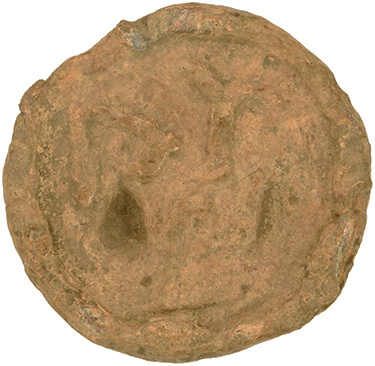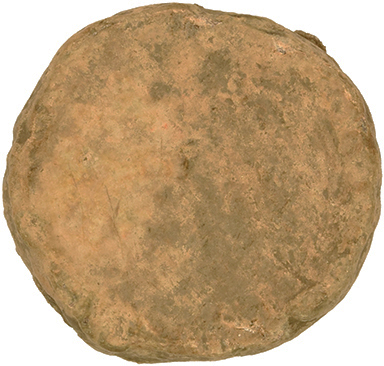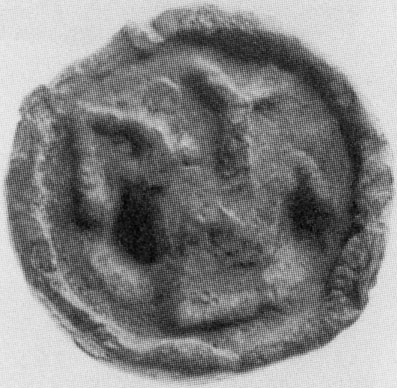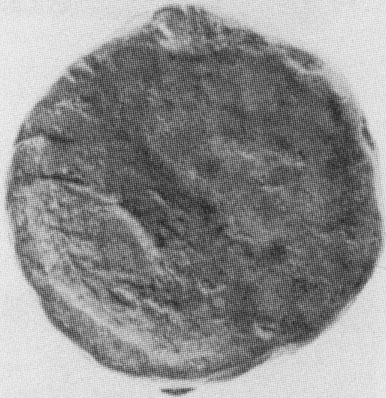
-
Copyright credit: Ashmolean Museum / Louise Willocx

-
Copyright credit: Ashmolean Museum / Louise Willocx

-
Copyright credit: Ashmolean Museum / Louise Willocx
-
Copyright credit: Ashmolean Museum / Louise Willocx
-
Copyright credit: Meyer 2001–03

-
Copyright credit: Meyer 2001–03

ARCHAEOLOGICAL DESCRIPTION OF THE WEIGHT
Authority
Mint
Moesian mint
Denomination
Material
Lead
Manufacture
Cast
Shape
Disc or similar (ellipse, etc.)
Length
3.00 cm
Width
3.00 cm
Height
0.60 cm
Metrology
| Mass (g) | Mass (grain) | Date of measurement | Reference | fragmented | cleaned | reference weight |
|---|---|---|---|---|---|---|
| 30.30 | - | Sept. 3, 2019 | Autopsy Louise Willocx | No | No | Yes |
| 30.31 | - | - | Meyer 2001–03 | No | No | No |
Iconography
| Symbol | Technique | Direction | Position | Number | Synecdoche |
|---|---|---|---|---|---|
| Dot / Pellet | Relief | Two |
Wear
Lightly worn
Corrosion
Lightly corroded
Handle
No
Suspension hole
No
Recarved mould
No
Recarved weight
No
Intentionally destroyed
No
Archaeological description
Ashmolean Museum: Lead weight.
Meyer 2001–03: Weight of the late Roman or Byzantine Period. Disc lead weight, 30.31 gr., 2.85 x 3.24 x 0.87 cm. Obv. Circular field with letters ΔYO and two raised pellets. Outer edge lined by recessed border. Rev. Slightly convex. Blank. AN 2004.50. No parallels are known to me. A Roman date is inferred from the use of pellets to indicate the unit's value, but our piece is far below the weight of two ounces.
Autoptic examination: Lead weight, disc shape. Signs of wear and corrosion: chippings; strokes on the side; big triangular hollow in the lower left corner, another one on the right. On the obverse, frame and letters in relief: ΔY O and depiction of two raised pellets? (uncertain). The reverse is blank and almost flat.
Meyer 2001–03: Weight of the late Roman or Byzantine Period. Disc lead weight, 30.31 gr., 2.85 x 3.24 x 0.87 cm. Obv. Circular field with letters ΔYO and two raised pellets. Outer edge lined by recessed border. Rev. Slightly convex. Blank. AN 2004.50. No parallels are known to me. A Roman date is inferred from the use of pellets to indicate the unit's value, but our piece is far below the weight of two ounces.
Autoptic examination: Lead weight, disc shape. Signs of wear and corrosion: chippings; strokes on the side; big triangular hollow in the lower left corner, another one on the right. On the obverse, frame and letters in relief: ΔY O and depiction of two raised pellets? (uncertain). The reverse is blank and almost flat.
Autopsy
Yes
INSCRIPTION
| Language | Technique | Legend type |
|---|---|---|
| Greek | Relief | Denomination |
Fac simile
ΔΥΟ
Edition
Δύο.
Monogram
ARCHAEOLOGICAL CONTEXT
Findspot (region)
Findspot (site)
context
CIRCUMSTANCES OF ACQUISITION
Region
City
Date of first acquisition
Dec. 31, 1996
circumstances
Meyer and Moreno 2004: In 1996 a private collector of ancient coins received a posted parcel containing 43 metal objects, supposedly lead weights from ancient Istria on the western shore of the Black Sea. These came unsolicited from an antiquities dealer based outside Britain, and given that they would otherwise most likely have been dispersed on the open market, the recipient notified the Ashmolean Museum in Oxford and deposited the package at the Department of Antiquities.
DATING OF THE WEIGHT
Curatorial Section
GREEK
,
ROMAN
Time frame
FROM
1
TO
250
Comments on Chronology
COLLECTION HISTORY
Collection
| Name | Date of acquisition | Inventory number |
|---|---|---|
| Ashmolean Museum (Oxford) | Dec. 31, 1996 | AN 2004.50 |
Bibliography
| Reference | Page/Column | Reference (number) | Plate / Figure | Comment |
|---|---|---|---|---|
| Meyer 2001–03 | 61, 76 | 40 | fig. 40 | None |
VARIA